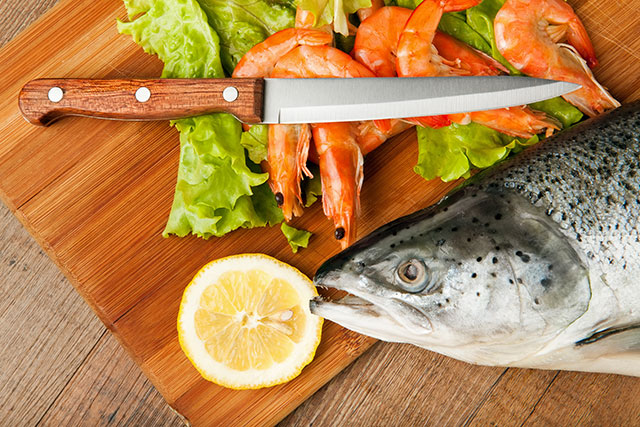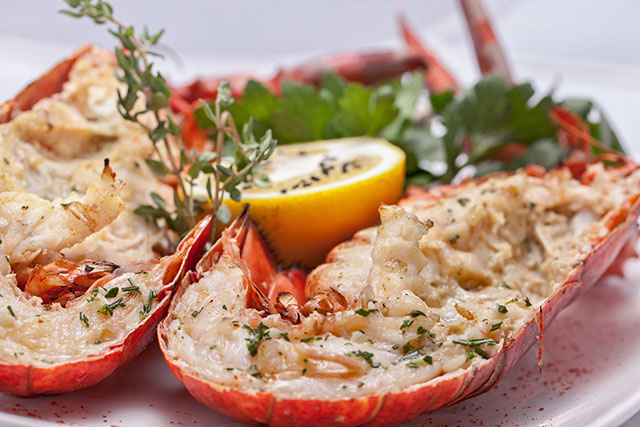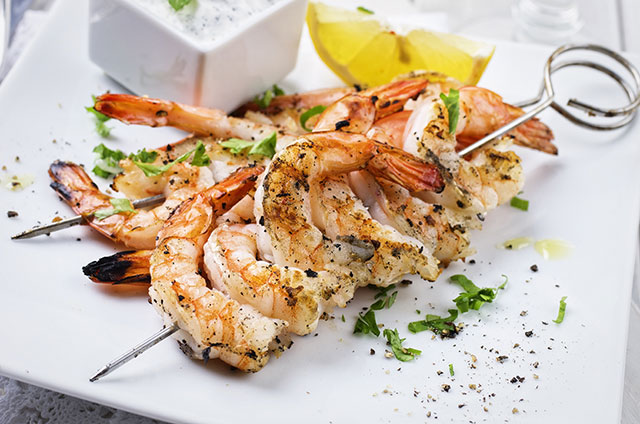- Home
- About Us
- Contact Us
- Your Gift Card: Activate
- Check Card Balance
- Your Shopping Cart

Seafood is something that is incredibly easy to cook, yet surprisingly, many cooks feel intimidated by it. In fact, two-thirds of all seafood is consumed inside restaurants, revealing just how hesitant home-cooks are when it comes to cooking things like prawns and salmon. Many aren't sure what fish to buy, some worry about the freshness of fish and even more feel concern that they may overcook it or screw it up. But these people are missing out!
With a basic understanding of seafood you can enjoy everything from lobsters and mussels to ocean trout and snapper. You'll enjoy fresh, light, summery dishes and you could also notice a change in health. So stop fretting and start learning!
A Guide to Buying
Buying fresh fish is easy once you know what to look for.
When buying whole fish, look for:
When buying fillets, look for:
When buying live, look for:
When buying shellfish, look for:
Most importantly, look for reputable vendors that offer a clean environment with very little smell. Your seafood shop should not stink!
A Guide to Storing

In an ideal world, seafood should be consumed on the day it is purchased, but we know this can't always be the case. If eating the following day, remove fish from packaging once home, clean with a damp cloth, place it on a plate, cover and refrigerate. Consume within 24 hours.
Crabs and lobsters should always be cooked immediately, as should molluscs such as oysters, clams and scallops. At the very least, they should be covered with a damp cloth and kept in the coldest part of the fridge.
Leftover cooked fish may be kept in the refrigerator and used within two days.
A Guide to Preparing
Filleting a fish:
Start by removing the pectoral fins, then deeply cut across one side of the fish, just below the head. Gently slide the knife along the spine towards the tail. Turn fish over, repeat and then pick out any loose bones with tweezers.
Peeling and deveining prawns:
Hold the prawn with one hand and twist the head off with the other. Peel away the body shell, rip off the legs and leave the tail (unless recipe calls for it off). To remove the vein, get a good grip using your fingers and pull towards you. If having trouble, use a small parking knife to cut alongside the vein.
Boning fish fillets:
Fish fillets such as salmon can contain pin bones that will need to be removed before consuming. Feel for any sharpness by running your fingers over the fillet and pull any out using tweezers.
Peeling a lobster:
Twist tail off and away from the head. Take kitchen scissors and cut along the softer underside of the tail. Pull the underside away to reveal the tail meat. Cut the alimentary canal away if required. Twist off legs and serve with shell pliers.
Cleaning mussels:
Discard any mussels with broken shells and rinse underwater. Some mussels may require scrubbing to remove sand. If the growers haven't removed beards, do so by pulling the beards away at the narrow end of the mussel.
Shucking oysters:
Wash and scrub shell to remove sand then wrap your left hand with a tea towel. Place the oyster in your hand, with the cupped side facing down, the pointed end facing you. Take an oyster knife and using your other hand, insert the knife where the two shells join. You may need to use a twisting motion to force the shell open. To remove the oyster, slide the knife into the cupped shell to cut the adductor muscle.
Marinating:
Marinades are a great way to add flavour to a dish and can also be used to tenderise seafood. Be careful not to marinate too long or your seafood may begin to cook, especially if it combines acidity from lemon or limes. Always drain before cooking.
Thawing frozen fish:
Frozen fish should be consumed within 3 months and always defrosted in the fridge. For a quicker method, try placing under cold, running water.
A Guide to Cooking
Fat fish (with an oil content of more than 5%), such as salmon, Chilean sea bass and tuna, are generally stronger in flavour, therefore very little needs doing to make it delicious. Lean fish, such as trout, snapper, cod and black drum, tends to be firmer in texture and make for great additions to soups, stews and chowders, which require frequent handling.
Timing is the most important factor when cooking seafood, as this will keep it moist and flavourful. General cooking guides include:
Whole fish (with or without head and tail):
Fillets:

Prawns:
Scallops:
Lobster tails:
A Guide to Recipes
When starting out with seafood, you want to keep recipes simple and easy. Recipes to try include:
With just a little effort, you can become great at cooking seafood right in your own home.